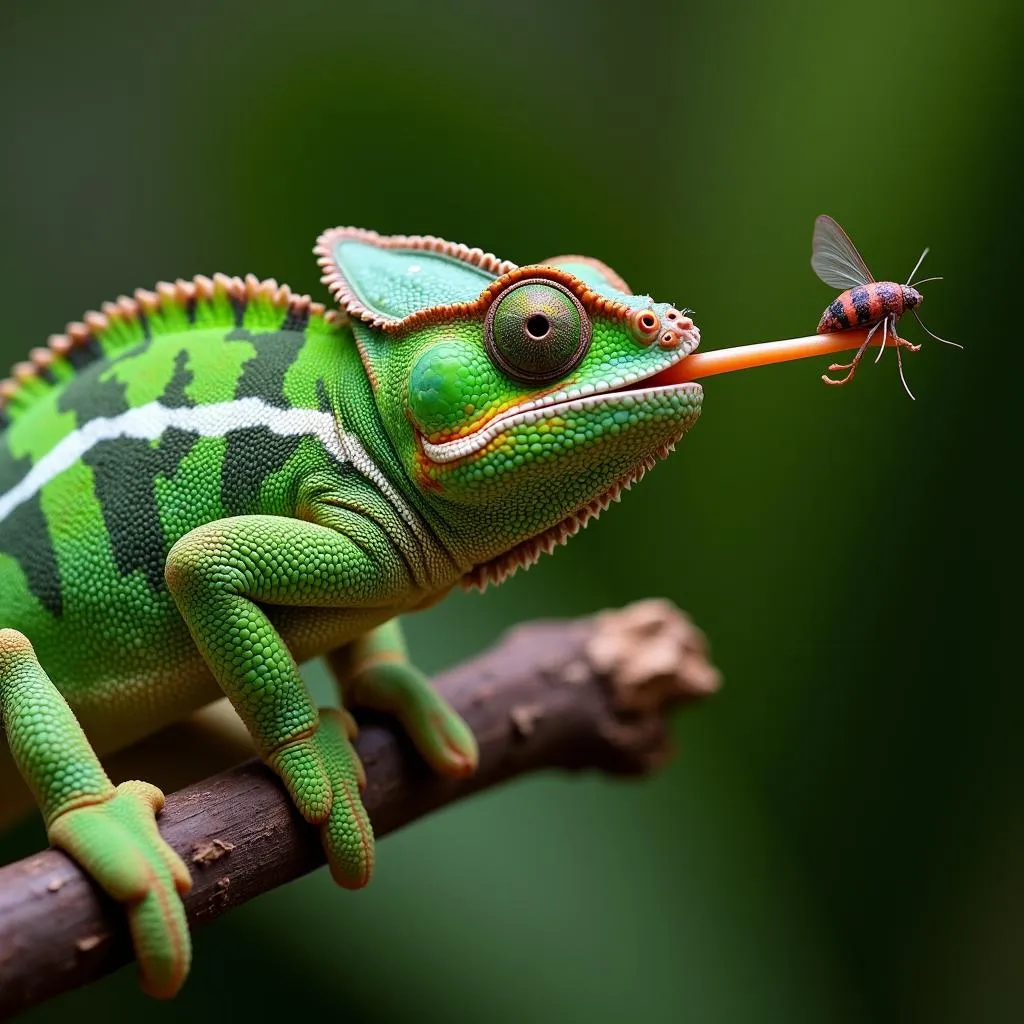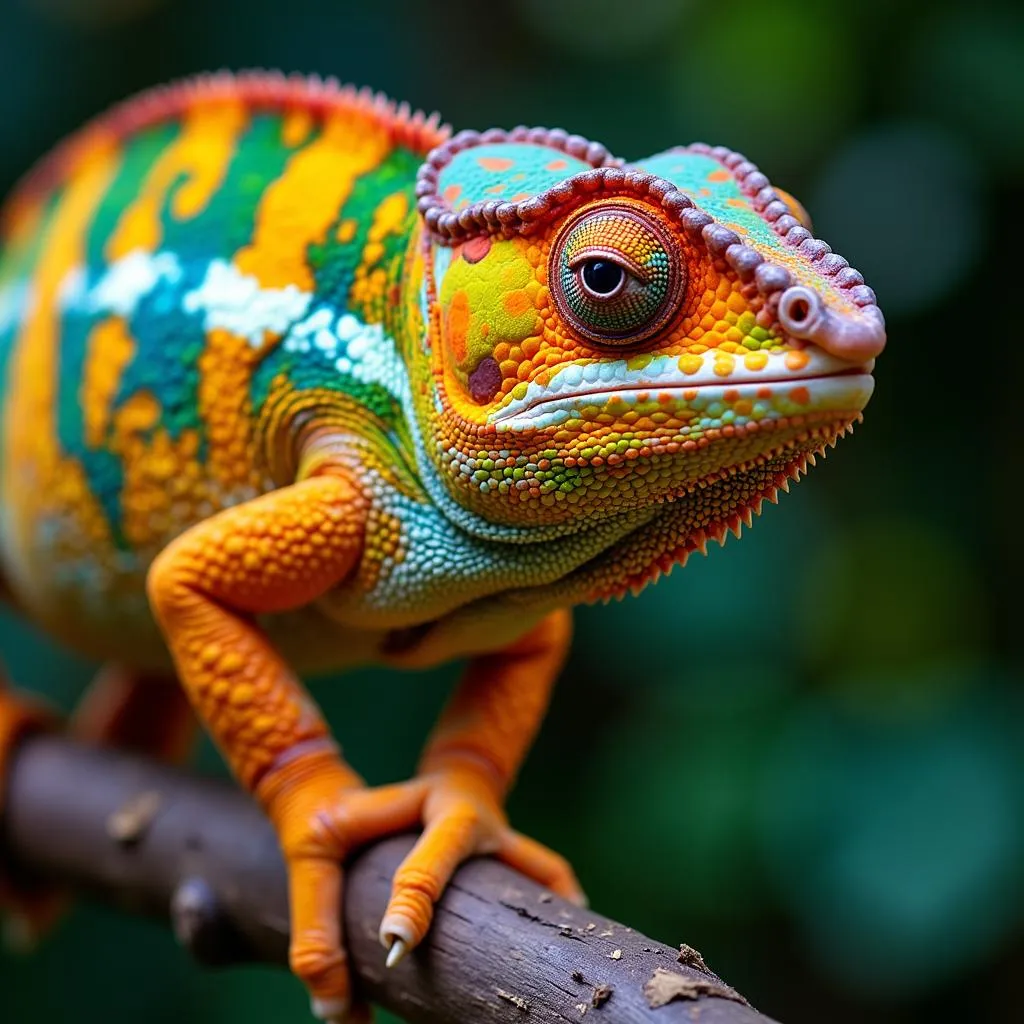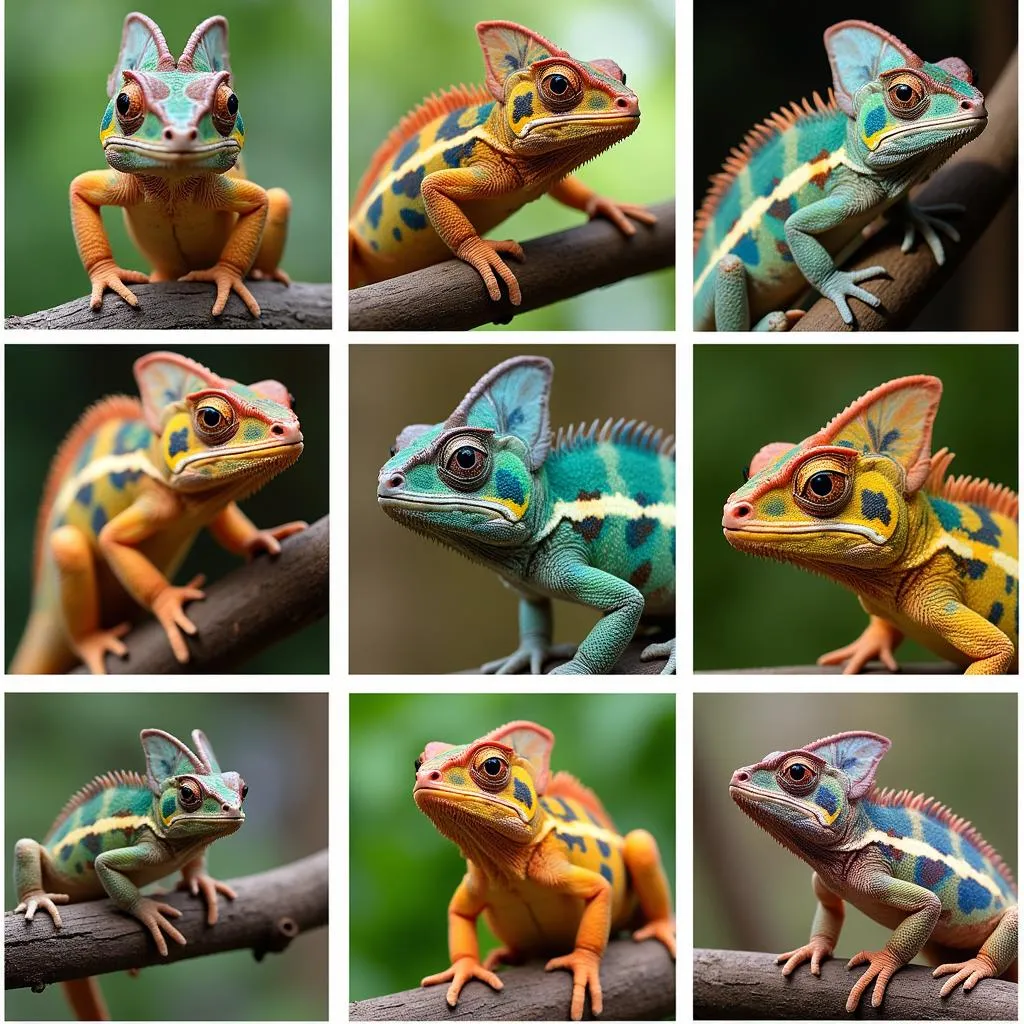The African Chameleon: Master of Disguise and Marvel of Nature
The African chameleon, a creature of captivating beauty and unparalleled adaptation, reigns supreme in the vibrant tapestry of Africa’s wildlife. These reptiles, often cloaked in emerald greens, fiery oranges, and sapphire blues, are renowned for their ability to change color, a mesmerizing spectacle that has captivated humans for centuries. However, their captivating appearance is just the tip of the iceberg when it comes to understanding these fascinating creatures.
Beyond the Chameleon’s Color-Changing Abilities
While their color-changing prowess might be their most famous attribute, African chameleons possess a myriad of other unique adaptations that make them perfectly suited for their arboreal lifestyle. Their independently rotating eyes, providing an almost 360-degree field of vision, allow them to simultaneously scan their surroundings for predators and prey. Their long, sticky tongues, often exceeding the length of their own bodies, can shoot out with lightning speed to capture unsuspecting insects with incredible precision.
 Chameleon Catching Insect with Tongue
Chameleon Catching Insect with Tongue
Furthermore, their prehensile tails, acting as a fifth limb, provide exceptional grip and balance as they navigate the intricate branches of their forest homes. Their zygodactyl feet, with toes fused into opposing groups, further enhance their grip, making them adept climbers.
Demystifying the Chameleon’s Color Palette
Contrary to popular belief, chameleons don’t change color to blend in with their surroundings. Instead, their color-changing abilities serve as a complex communication tool, reflecting their mood, health, and social status.
 Chameleon Displaying Bright Colors
Chameleon Displaying Bright Colors
Specialized cells called chromatophores, located beneath their skin, contain pigments that can be expanded or contracted, altering the wavelengths of light reflected off their bodies and producing a breathtaking spectrum of colors. A dominant male, for example, might flash bright colors to ward off rivals, while a submissive chameleon might adopt duller hues to signal its non-threatening nature.
Unveiling the Diversity of African Chameleon Species
Africa boasts an astonishing diversity of chameleon species, each with its own unique adaptations and characteristics. From the gargantuan Parson’s chameleon of Madagascar, reaching lengths of over two feet, to the diminutive pygmy chameleons, barely exceeding an inch in length, the continent is a haven for these remarkable reptiles.
 Variety of African Chameleon Species
Variety of African Chameleon Species
Sadly, habitat loss and the illegal pet trade pose significant threats to many chameleon populations. Conservation efforts are crucial to ensure the survival of these captivating creatures and preserve the biodiversity of Africa’s ecosystems.
Conclusion
The African chameleon, an embodiment of nature’s ingenuity, continues to fascinate and inspire. By understanding their complex behaviors, adaptations, and the threats they face, we can better appreciate these unique creatures and contribute to their conservation. Let us ensure that future generations inherit a world where these masters of disguise continue to thrive in the vibrant landscapes they call home.


